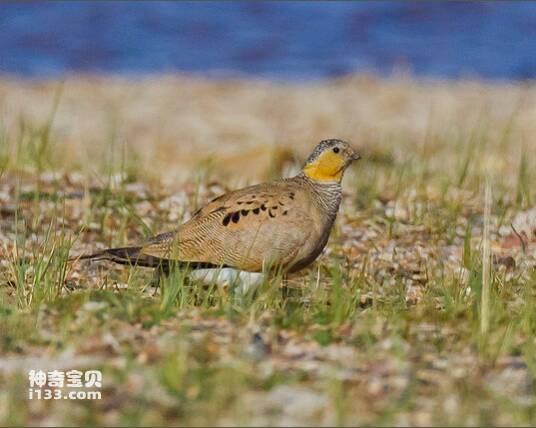Syrrhaptes tibetanus
IUCN
LCBasic Information
Scientific classification
- name:Syrrhaptes tibetanus
- Scientific Name:Syrrhaptes tibetanus
- Outline:Landfowl
- Family:Pigeoniformes Psammophyllidae
Vital signs
- length:36.5-45.5CM
- Weight:354-450g
- lifetime:No textual research information is available
Feature
The body feathers are mainly yellow with yellow throat and head
Distribution and Habitat
The Tibetan sandgrouse breeds within China in Qinghai Lake, western Xinjiang, Shiqu County in northwestern Sichuan, and northern, central and southern Tibet. Outside China, it is found in Mongolia, Ladakh in India, and Lahore and Pamir in Pakistan.
Tibetan sandhens mainly live in desert, grassland, semi-desert, alpine meadow grassland and lakeside grassland at an altitude of 3000-5000 meters, and often move to low altitude areas below 4000 meters in winter.
Appearance
The forehead, eyes, cheeks and chin of the Tibetan male are white with fine black plumage, and the side of the head, throat, and neck ring are orange yellow. The top of the head is yellowish-white with fine dark brown stripes or markings, and the hindneck, side of the neck and upper chest are yellowish-white with narrow and dense wavy stripes. The upper dorsal sand brown has fine black brown moth spots, and the upper wing cover, shoulder feathers and tertiary flying feathers are grayish brown, densely covered with dark brown moth spots. There is a large secondary dark spot in the shoulder feather. The lower back, waist and tail are covered with gray brown with dark insect moth spots. The primary, secondary and large overlying feathers are black, the inner primary feathers have gray ends, and the outer secondary feathers sometimes have sandy yellow patches. The upper chest is grayish-white with blackish-brown markings, the lower chest, abdomen, flank and leg coverings are stained white,
Details
Syrrhaptes tibetanus (Syrrhaptes tibetanus) has no subspecies.

Tibetan sandgrouse often move in small groups, sometimes hundreds of large groups. It is found near rocky river valleys, streams and lakes. Sexually bold, not afraid of people, does not fly far when shot at, often the whole group is hunted. Agile flight, two wings flap quickly, often issued a "whirring" sound. It mainly feeds on grass, plant fruits, seeds and buds, and also eats some insects, mainly foraging on the ground.
The breeding period of the Tibetan sandgrouse is from May to August, and it usually breeds in pairs and alone. The nest is very simple, usually a small hole in the ground with a little dead grass or no bedding, and sometimes the eggs are directly laid on the rocky ground. Each brood usually lays 3 eggs, the eggs are sandy or light grayish brown, with ochre brown or reddish-brown spots, and some are decorated with lavender markings, the eggs are oval or oval, the size of the eggs is 44-45 mm ×29-34.8 mm, the average 49.2 mm ×31.9 mm. The male and female incubate the eggs in turn.
The Tibetan sandgrouse has been listed on the 2012 IUCN Red List of Threatened Species ver 3.1 - Not Threatened (LC).
The Tibetan sandgrouse has been included in the List of Land Wild Animals under State Protection that are beneficial or of Important economic and scientific research Value issued by the State Forestry Administration of China on August 1, 2000.
Protect wild animals and eliminate wild meat.
Maintaining ecological balance is everyone's responsibility!








